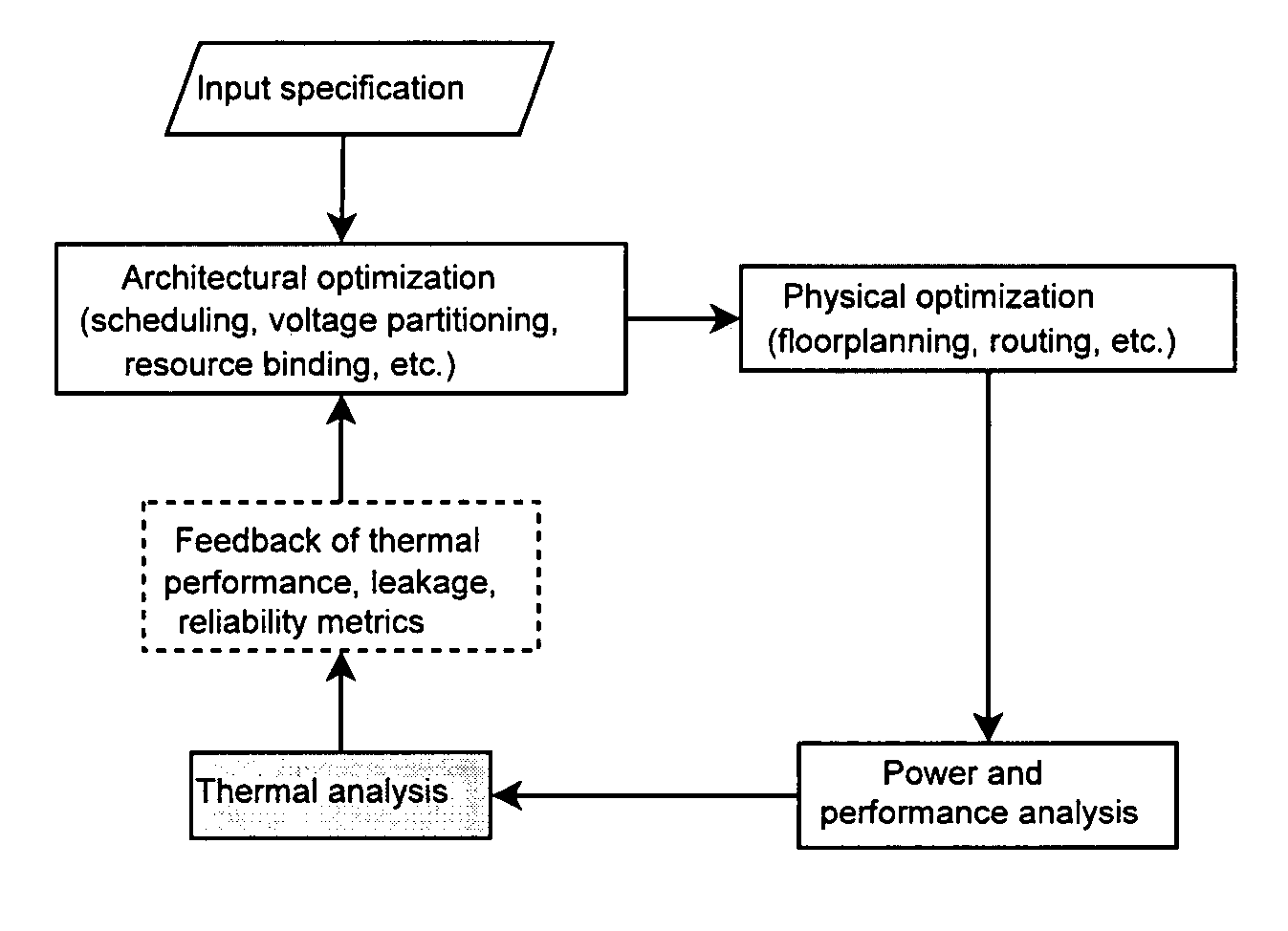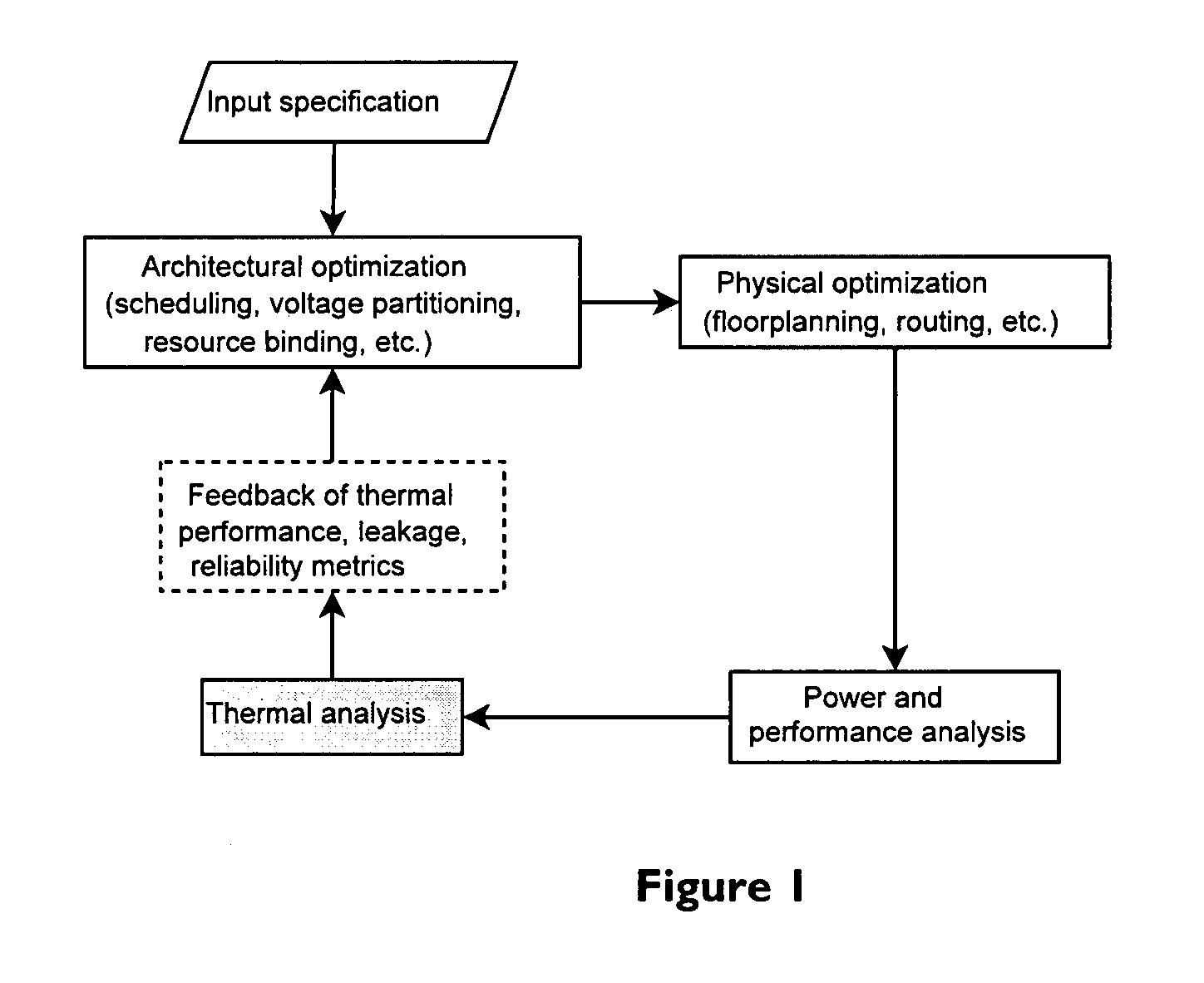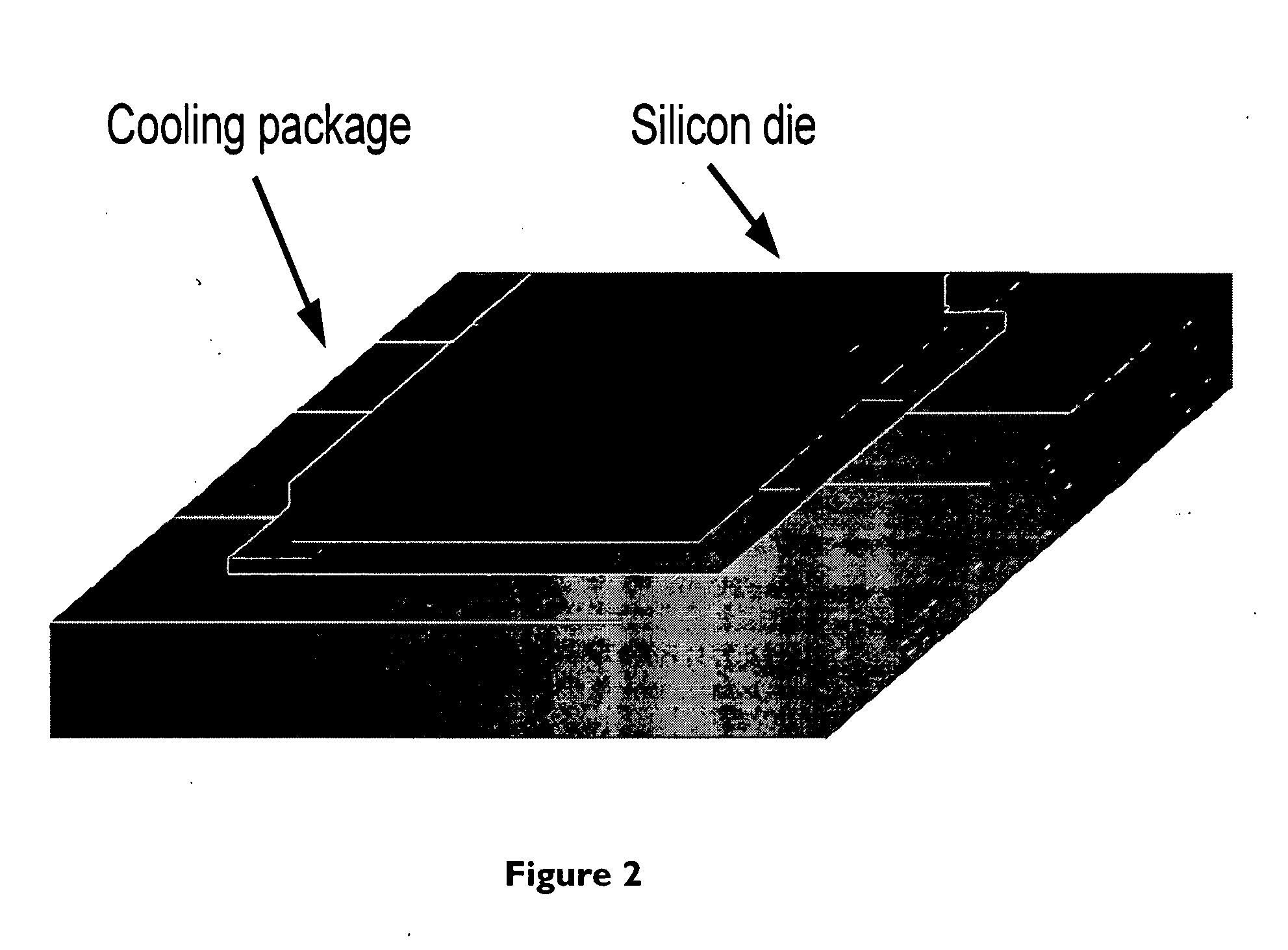Adaptive analysis methods
- Summary
- Abstract
- Description
- Claims
- Application Information
AI Technical Summary
Benefits of technology
Problems solved by technology
Method used
Image
Examples
Embodiment Construction
1. Overview
[0043] The invention relates to a method of speeding up numerical analysis of systems involving large numbers (e.g., thousands, hundreds of thousands) of discrete elements that relate to static and dynamic properties of a two- or three-dimensional (2-D or 3-D) system that diffuse through space and / or time. Such properties of systems may be, for example, temperature, light, density, charge, concentration, humidity, pressure, entropy, etc. Such systems may relate to fields such as, but not limited to, biomedical, molecular dynamics (e.g., protein folding), meteorology, astrophysics, engineering failure analysis, financial analysis, and electronics. For the purpose of this disclosure, the invention is applied to the field of electronics and the thermal analysis of electronic systems. Electronic systems to which the method may be applied include electronic devices such as integrated circuits (ICs) and any form of hybrid circuit such as printed circuit boards, circuits employ...
PUM
 Login to View More
Login to View More Abstract
Description
Claims
Application Information
 Login to View More
Login to View More - R&D
- Intellectual Property
- Life Sciences
- Materials
- Tech Scout
- Unparalleled Data Quality
- Higher Quality Content
- 60% Fewer Hallucinations
Browse by: Latest US Patents, China's latest patents, Technical Efficacy Thesaurus, Application Domain, Technology Topic, Popular Technical Reports.
© 2025 PatSnap. All rights reserved.Legal|Privacy policy|Modern Slavery Act Transparency Statement|Sitemap|About US| Contact US: help@patsnap.com



